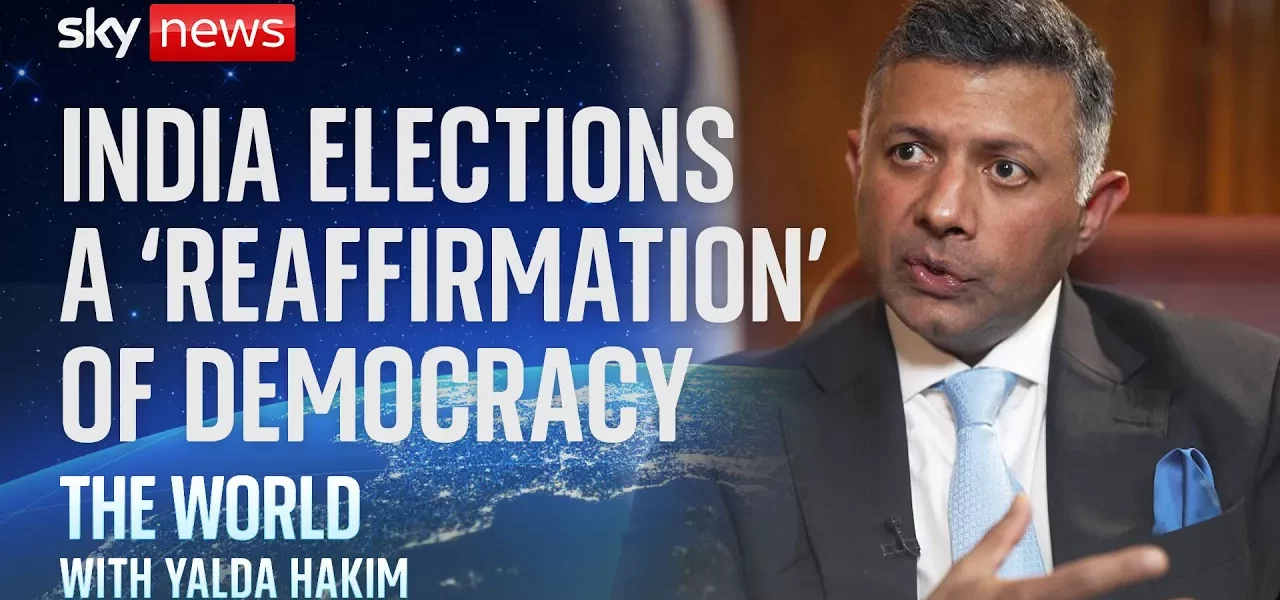Understanding the Recent Indian Elections: A Comprehensive Analysis

This article delves into the results of the recent Indian elections, highlighting the complexities of the political landscape and the implications for democracy in India, under Prime Minister Narendra Modi’s leadership.
Introduction
The recent Indian elections have sparked widespread discussion regarding their outcomes and implications for the future of democracy in the country. With a voter base that speaks volumes about their preferences and the changing political dynamics, the results reflect both continuity and change in a nation known for its vastness and diversity. This article aims to dissect these election results, exploring the trends, the parties involved, and the overarching significance of these developments for India’s democratic fabric.
Election Results Overview
The Indian elections are characterized by their scale, with the Lok Sabha comprising 543 seats, where the magic number to form a government stands at 272. The elections witnessed two major political alliances: the ruling National Democratic Alliance (NDA) and the opposition Indian National Democratic Alliance (INDIA). Understanding the dynamics of these alliances is crucial to comprehending the electoral results.
The Political Alliances
- National Democratic Alliance (NDA): Led by the Bharatiya Janata Party (BJP), the NDA has historically performed well in previous elections.
- Indian National Democratic Alliance (INDIA): This opposition coalition aimed to challenge the NDA’s dominance and has shown signs of outperforming poll predictions.
Impact of the Results
The current election results suggest a mixed picture: while the BJP remains in power, it has not achieved the sweeping victory it anticipated. This outcome has led to discussions regarding its implications for the Modi administration, highlighting a potential shift in voter sentiment.
Voter Sentiment and Political Dynamics
The Indian electorate has demonstrated a clear voice through these elections, signaling both support for the ruling party and a desire for change. This nuanced voter sentiment reflects a sophisticated understanding of the political landscape.
Continuity and Change
The electoral results can be interpreted as a reaffirmation of democratic values, showcasing the ability of Indian citizens to express their views and preferences. Notably, the results illustrated:
- A continued mandate for the ruling party.
- A stronger showing from opposition parties than anticipated.
- A need for the ruling party to reassess its strategies and public engagement.
The Role of Modi’s Leadership
Prime Minister Narendra Modi’s leadership has been a focal point of discussion, especially considering the criticism he has faced regarding his controversial remarks during the campaign. The results prompt questions about the sustainability of his political persona.
Democracy in India: A Global Perspective
The elections serve as a reminder of India’s unique position as a democracy established in conditions of poverty. The resilience of Indian democracy sends a powerful message to other nations, particularly those grappling with authoritarian tendencies.
Lessons for Other Nations
The successful conduct of elections in India, despite various challenges, underscores the importance of democratic frameworks. The implications extend beyond national borders, offering insights for countries like China, where democracy is often questioned.
Climate Change and Future Challenges
The recent elections occurred amidst significant environmental challenges, including an unprecedented heatwave, prompting discussions about India’s climate policies. The government has made strides in renewable energy but faces criticism regarding its reliance on coal.
India’s Commitment to Climate Goals
India has pledged to further its commitment to climate action, having achieved its Paris Agreement targets ahead of schedule. The focus is on:
- Expanding solar power generation.
- Investing in green transportation.
- Transitioning to sustainable energy sources while ensuring energy accessibility for all.
Conclusion
The recent Indian elections reflect a complex interplay of continuity and change within the democratic framework of the country. As the electorate navigates its choices, the implications for governance, international relations, and climate policy are profound. The resilience of democracy in India serves as an enduring lesson for the world. To stay updated on the evolving political landscape in India and its global implications, explore our related articles and analyses.
“`




